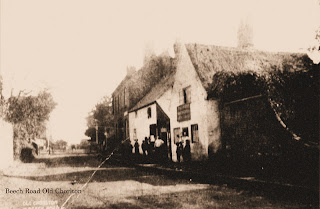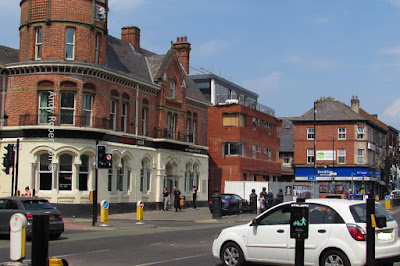The continuing story of the house Joe and Mary Ann Scott lived in for over 50 years and the families that have lived here since.*
 |
| Food as it comes out of the ground, Italy, 2015 |
I wonder what Joe and Mary Ann would have made of wonky foods.
I first came across them in Morrisons, which because they buy the whole crop from their suppliers, have started marketing the less than perfect fruit and veg as “Wonky Morrisons”.
And with a bit more digging I discovered a whole range of companies selling wonky food and pretty much all trading under names which include the word wonky.
Now for anyone born before the 1970s the idea that there is anything novel in misshapen fruit and veg will seem odd.
Must green grocers sold the food as it came from the wholesalers who in turn got it direct from the farmers.
I suspect a bit of quality control went on at each stage, but essentially what everyone in the chain was interested in, was the taste and the freshness of the stuff.
But the drive to perfection and uniformity by the big supermarkets pretty much did for the bent carrot and the twisty stick of rhubarb, and that extended to ensuring that everything came clean and clear of dirt which might just betray its origins in the ground.
Not that all supermarkets were seduced by such practices. The chain in Italy used by Rosa and Simone still buy in food which has not passed a perfection gauge and often still carries soil from the ground it came out of.
 |
| Bright and fresh, 2015 |
While over here some shops now make a feature of their unwashed carrots and potatoes, selling them just that bit cheaper.
At which point I do have to confess that washing carrots and potatoes is time consuming and messy, but something that mum, and Nana did without a second’s thought and I suspect so did Mary Ann.
Of course the counter agreement might well be that with wonky might come a lot of waste, as you cut away the odd bits which are too small to be used.
 |
| Equally fresh, 1956 |
But my experience of the range from that supermarket is that enough quality control has already gone on to make that concern irrelevant.
So we buy wonky whenever we can and as daft as it sounds as I am peeling the potatoes and cutting the carrots in the kitchen where Mary Ann also prepared the food, I rather think there could be a sense of continuity.
That said I rather think that she was of that generation who having cleaned, peeled, and cut for decades, embraced the readymade range of frozen foods which were stealing the market from the 1950s onwards.
They came in small packets, given that most people didn’t own a fridge, let alone a freezer, and were sold as fresher than the produce in the greengrocer and quicker to cook.
They became how we ate vegetables in our house and pretty much determined that we only had peas, green beans and sometimes carrots.
Mother even flirted with those
“all in one” TV dinners which she was drawn to, because of the novelty value, but even she had to admit the quality was not so good.
 |
| "ready prepared, ready to cook, 1956 |
Perhaps Joe and Mary Ann also experimented with roast beef, gravy, potatoes and green veg in tin foil, or perhaps they did stick with wonky stuff, still bearing the dirt, but sadly I will never know.
Pictures; f
rom an Italian supermarket, 2015, from the collection of Andrew Simpson and adverts for Birds Eye Foods, from Woman’s Own, January 12 1956
*
The story of a house, https://chorltonhistory.blogspot.co.uk/search/label/The%20story%20of%20a%20house


















































